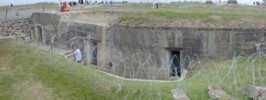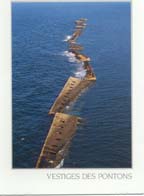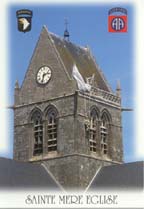
| France 2001 |

|
|
|
D-DayThe first stop in our tour of the D-Day landing beaches was the American Cemetery at Omaha Beach. The cemetery, 172.5 acres in extent, is one of fourteen permanent American World War II cemeteries constructed on foreign soil. Free use as a permanent burial ground was granted by the government of France in perpetuity without charge or taxation.The cemetery is rectangular in shape. Its main paths are laid out in the form of a Latin cross. Inside, filling most of the eastern end of the cemetery is a semi-circular memorial. Facing west, the memorial overlooks a large reflecting pool, two flagpoles from which the American flag flies, the graves area, and the chapel.

Pointe Du Hoc American Second Ranger Battalion under the command of Lieutenant Colonel James E. Rudder. During the American assault of Omaha Beach on June 6, 1944, these elements scaled the 100 foot cliff and seized the German artillery pieces that the allies believed could have fired on the American landing troops at Omaha Beach. At a high cost of life, they successfully defended against determined German counterattacks. 




|
Giverny Caen & Villers Bayeux D-Day Le Mans Loire Valley Chateau Chinon Castle Troo Caves Carcassonne Nimes Pont du Gard Le Puy En Velay Perouges Beaune Paris! Cimetiere Notre Dame Museums Versailles Ballooning |
|
|
|
|